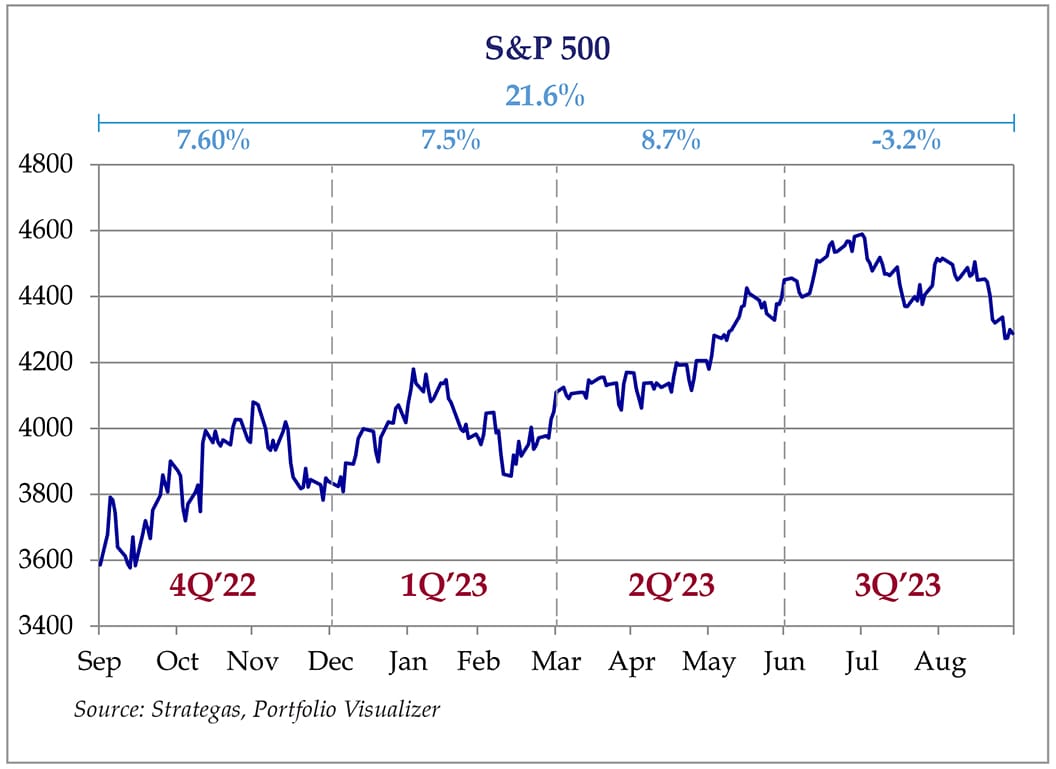Understanding the Bear Steepener: A Shift in Interest Rates
Buckle up, investors! Today, we’re diving into the intriguing world of finance to decode a powerful force known as the “bear steepener.” This phenomenon, characterized by a rapid increase in long-term interest rates compared to their short-term counterparts, can significantly impact your investments and the overall economy.
What is a Bear Steepener?
Imagine a seesaw. On one side, we have short-term interest rates, known for their quick fluctuations. On the other side are long-term rates, which tend to move more slowly but carry greater weight. A “bear steepener” occurs when this seesaw tilts dramatically, with long-term rates surging upward while short-term rates lag behind.
What Causes a Bear Steepener?
Several factors contribute to this intriguing financial phenomenon:
- Inflation Jitters: As prices rise (inflation), the value of money erodes over time. To counter this, investors may demand higher returns on long-term loans, driving up long-term interest rates.
- The Fed’s Moves: The Federal Reserve (the Fed) influences short-term interest rates to maintain economic stability. When the Fed raises rates to combat inflation, investors often anticipate further hikes, potentially causing a bear steepener.
- Economy on a Roll (Or Is It?): A booming economy can also lead to a bear steepener. Increased business confidence often translates to more borrowing, which can drive up the demand for loans and, consequently, long-term interest rates.
The Potential Impacts: Good News or Bad News?
The Potential Upside:
- Confidence Boost: Some experts view a bear steepener as a positive sign, suggesting that investors are optimistic about future economic growth and willing to commit to longer-term investments.
- Back to Normal: Historically, a slightly upward-sloping yield curve (long-term rates higher than short-term rates) is considered normal. A bear steepener might indicate a return to this equilibrium after a period of unusual market activity.
The Potential Downside:
- Inflation Alarm Bells: A bear steepener can signal heightened investor concerns about inflation eroding their returns. This can be a potential warning sign of broader economic challenges.
- Borrowing Costs Rise: As long-term rates climb, borrowing money for mortgages, business expansions, and other loans becomes more expensive. This can potentially hinder economic growth if businesses hesitate to take on new projects.
Bear Steepener vs. Bull Steepener: Understanding the Difference
These two terms are easily confused. Let’s clarify:
- Bear Steepener: Long-term interest rates rise faster than short-term rates, often driven by inflation concerns and potentially indicating a slowing economy.
- Bull Steepener: Short-term rates fall faster than long-term rates, often signaling an economic recovery and the Fed’s efforts to stimulate growth.
Navigating the Bear Steepener: Strategies for Investors
For bond investors, a bear steepener presents both opportunities and challenges. Consider these strategies:
- Short-Term Out, Long-Term In: This counterintuitive approach involves selling short-term bonds and using the proceeds to purchase long-term bonds. This allows investors to potentially capitalize on rising long-term interest rates.
- Options on Bond Futures: These sophisticated instruments provide a way for experienced investors to make targeted bets on the direction of the yield curve. However, they carry inherent risks and require a deeper understanding of market dynamics.
A Global Perspective: The Ripple Effect
Interest rate shifts in one country can reverberate throughout the global economy. A bear steepener in a major economy like the United States can influence bond markets worldwide, impacting yields and investment flows on a global scale.
Proceed with Caution: Interpreting the Signals
While a bear steepener is a widely observed economic indicator, it’s important to remember that predicting the future of the economy is complex. No single signal provides a complete picture. Some analysts argue that bear steepeners are not always reliable predictors of inflation or economic growth.
The takeaway? Keep a watchful eye on bear steepeners, but don’t base your investment decisions solely on a single interpretation. Stay informed, consult with a financial advisor, and consider multiple perspectives to make informed investment choices aligned with your individual circumstances and risk tolerance.
## What does a bear steepener mean? – bear steepener
A bear steepener is a clear signal within the financial markets, indicating that long-term interest rates are rising at a faster pace than their short-term counterparts. This often happens when investors grow apprehensive about the looming threat of inflation. They fear that the purchasing power of their money will diminish over time, so they demand higher returns on their long-term investments—like bonds—to offset this potential erosion. This increased demand pushes those long-term interest rates higher.
Unlike a typical upward-sloping yield curve, which usually signifies a healthy and growing economy, a bear steepener suggests a more turbulent economic outlook. Investors are essentially expressing their concerns about the potential for stagflation—a scenario where economic growth stagnates, and inflation remains stubbornly high.
Here are the key factors that typically contribute to a bear steepener:
- Inflation on the Rise: As the cost of goods and services rises, investors become increasingly worried about the diminishing value of their money. To protect their investments, they demand higher returns on long-term investments, leading to a surge in those rates.
- Economic Jitters: Investors often hesitate to lock in their money for extended periods when they anticipate economic storm clouds on the horizon. Concerns about recessions, sluggish growth, or other economic headwinds make them favor shorter-term investments, pushing down short-term interest rates.
- Central Bank Actions: While not the primary driver, central banks can influence the shape of the yield curve through their policies. When they raise interest rates to combat inflation, it can contribute to the steepening we see in a bear market.
Navigating the Bear Steepener:
Floating-rate swaps can be a valuable tool for investors navigating the choppy waters of a bear steepener. These financial instruments allow you to swap fixed interest payments for payments that fluctuate with market rates. This way, you’re somewhat insulated from the wild swings of rising long-term interest rates.
Key Takeaways:
- A bear steepener often signals potential economic headwinds, with high inflation and slow growth.
- Unlike a normal steepening yield curve, a bear steepener suggests investor anxiety about stagflation.
- Prudent investors can use tools like floating-rate swaps to mitigate the risks associated with a bear steepener.
Dissecting the Bear Steepener vs. Bull Flattener: Your Guide to SEO Dominance – bear steepener
In the intricate world of finance, the yield curve serves as a critical barometer of investor sentiment and economic expectations. Two specific scenarios that can significantly impact market dynamics are bear steepeners and bull flatteners. Let’s break down these terms and explore their implications for investors.
Imagine the yield curve as a mountain range, with the height of each peak representing the interest rate for bonds with a specific maturity date. A steep yield curve signifies a considerable difference between short-term interest rates (the smaller hills) and long-term interest rates (the towering mountains). Conversely, a flat yield curve resembles rolling hills, indicating a minimal difference between short-term and long-term rates.
Bear Steepener: A Signal of Potential Trouble
A bear steepener occurs when the yield curve becomes even steeper, with long-term interest rates surging upward at a faster pace than their short-term counterparts. This phenomenon usually arises when investors become increasingly apprehensive about inflation, worrying that the purchasing power of their money will erode over time.
As a result, they demand higher returns on long-term investments (those taller mountains) to compensate for the perceived risk. This can signal a loss of confidence in the economy’s long-term growth potential.
Bull Flattener: A Glimmer of Hope?
In contrast, a bull flattener emerges when the yield curve flattens out, meaning long-term interest rates are declining faster than short-term rates. This often happens when investors anticipate an economic slowdown and flock towards the perceived safety of long-term bonds. This surge in demand for long-term bonds drives their prices up and pushes their yields (those mountains) down.
Bull flatteners can also occur when central banks, like the Federal Reserve in the US, decide to lower short-term interest rates to stimulate economic activity.
What Does This Mean for You?
Bear steepeners and bull flatteners offer valuable clues for investors, providing insights into the potential trajectory of the economy and how it might affect different asset classes. For instance, during a bear steepener, investors might favor short-term bonds to protect themselves against rising inflation without locking up their capital for an extended period. Conversely, during a bull flattener, investors might feel more comfortable taking on additional risk and investing in stocks, hoping to capitalize on a potential economic upswing.
To summarize the key differences:
| Feature | Bear Steepener | Bull Flattener |
|---|---|---|
| Yield Curve Movement | Becomes steeper | Flattens out |
| Long-Term Rates | Rise faster than short-term rates | Fall faster than short-term rates |
| Driving Forces | Inflation worries, economic concerns | Economic slowdown, central bank intervention |
| Market Sentiment | Generally bearish (investors are nervous) | Generally bullish (investors are more optimistic) |
While these scenarios offer a simplified view, the real world is far more intricate. Numerous factors can influence interest rates and the yield curve. Understanding the fundamentals of bear steepeners and bull flatteners can provide you with a helpful framework for interpreting market movements and making more informed investment decisions.
Bear Steepener vs. Bull Steepener: Understanding Yield Curve Strategies – bear steepener
In the complex world of finance, understanding the nuances of the yield curve is essential for investors seeking to make informed decisions. One such nuance is the concept of a “steepener”—an investment strategy that aims to capitalize on changes in the difference between short-term and long-term interest rates. Two primary types of steepeners exist: bear steepeners and bull steepeners.
What is a Steepener Position?
A steepener position is an investment strategy employed when an investor believes that the difference between short-term and long-term interest rates, represented by the slope of the yield curve, is poised to widen. Essentially, they are betting on the yield curve becoming steeper.
Here’s a simplified breakdown of how a steepener position typically works:
- Borrow Short-Term: The investor borrows funds at a prevailing short-term interest rate. This borrowed amount represents their cost of implementing the strategy.
- Invest Long-Term: The borrowed funds are then used to purchase bonds or other fixed-income securities that mature over a longer period and offer a fixed interest rate. This is where the investor seeks to generate profits.
- Profit from the Difference: If the investor’s prediction proves accurate and the difference between short-term and long-term interest rates expands as anticipated, they stand to profit from the spread. They pay a relatively low interest rate on their short-term borrowing while simultaneously earning a larger amount on their long-term investments.
However, it’s crucial to recognize that this strategy is not without its inherent risks.
- Interest Rate Risk: The success of a steepener position hinges largely on accurate predictions about future interest rate movements. If the yield curve fails to steepen as expected, or if it flattens instead, the investor could find themselves in a situation where they are paying more in interest on their short-term borrowing than they are earning on their long-term investments, resulting in potential losses.
- Market Risk: As with any investment, the value of the underlying assets can fluctuate. Even if the interest rate play unfolds as anticipated, other market factors could adversely impact the overall return, potentially offsetting gains or even leading to losses.
Bear Steepener vs. Bull Steepener: A Tale of Two Strategies
- Bear Steepener: This strategy involves positioning oneself to profit from a scenario where long-term interest rates rise at a faster pace than short-term rates, causing the yield curve to steepen. This often occurs during periods of heightened inflation expectations or when investors anticipate more aggressive central bank actions to raise interest rates.
- Bull Steepener: In contrast to a bear steepener, a bull steepener involves positioning oneself to benefit from a scenario where short-term interest rates decline more rapidly than long-term rates. This typically happens when investors foresee an economic slowdown or anticipate that central banks will lower interest rates to stimulate economic activity.
Who Might Benefit from a Steepener Position?
Typically, steepener positions are more suitable for seasoned investors with a comprehensive understanding of interest rates, yield curves, and the myriad factors that can influence their movements. Investors who anticipate rising inflation might consider a bear steepener strategy, as rising inflation often exerts upward pressure on interest rates. However, it is paramount to remember that steepener positions are not without risks and require careful consideration and a sound understanding of market dynamics.
Key Points to Remember:
- Steepener positions are bets on the direction of the yield curve, and like any bet, they carry inherent risks.
- Bear steepeners profit if long-term interest rates rise faster than short-term rates, while bull steepeners profit if short-term rates fall faster.
- These strategies are best suited for experienced investors with a deep understanding of interest rates and market dynamics.
Remember to conduct thorough research, consult with a financial advisor, and carefully consider your risk tolerance before implementing any investment strategy, including steepeners.
Let me know if you’d like to delve deeper into specific aspects of bear steepeners, bull steepeners, or any other related financial concepts!












